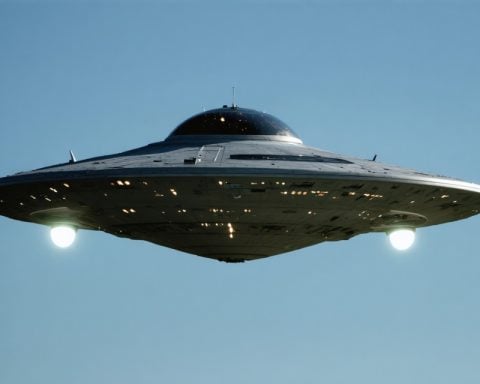ISRO prepares for a historic milestone. The Indian Space Research Organisation (ISRO) is set to launch its 100th satellite on January 29 from the iconic Satish Dhawan Space Centre located in Sriharikota. This mission, dubbed the GSLV-F15 NVS-02, will utilize the GSLV-F15 rocket, which features an indigenous cryogenic stage, to successfully place the NVS-02 satellite into a geosynchronous transfer orbit.
The upcoming launch follows closely after the successful deployment of NVS-01, the initial satellite in the second-generation series launched on May 29, 2023. The NVS-02 satellite includes advanced navigation payloads operating in multiple frequency bands, offering enhanced functionality similar to its predecessor.
With a lift-off mass of 2,250 kg and a power capacity of around 3 kW, the satellite is designed to replace the IRNSS-1E satellite and will be positioned at 111.75°E. This launch is part of the Navigation with Indian Constellation (NavIC) initiative, which aims to provide precise positioning and timing services across India and beyond.
The NVS series is critical for strengthening the official navigation satellite network, with plans for additional satellites in the pipeline. Notably, the NVS-02 satellite combines indigenous and procured atomic clocks, ensuring high precision in time measurement.
The GSLV-F15 mission represents a significant achievement for India’s space aspirations, marking the 17th flight of this reliable launch vehicle and reinforcing ISRO’s pivotal role in global space exploration.
Satellite Milestones and Their Global Impact
The launch of ISRO’s 100th satellite represents more than just a technical achievement; it highlights India’s growing position in the global space arena. As satellite technology proliferates, nations are increasingly recognizing the strategic advantages of being self-sufficient in space capabilities. By deploying navigation satellites like the NVS-02, India aims to enhance national security through improved positioning and timing services, which are crucial not only for civilian applications but also for military operations.
Moreover, India’s advancements in space technology have significant economic implications. The space sector is projected to contribute around $13 billion to India’s economy by 2025, facilitating job creation and fostering innovation in tech-driven industries. As ISRO continues to launch new satellites, it cultivates an environment conducive to attracting foreign investments in various sectors, from telecommunications to disaster management, which could stimulate economic growth well beyond India’s borders.
From an environmental perspective, satellite technology plays a critical role in monitoring climate change and natural disasters. Enhanced navigation systems can improve the efficiency of resource management, supporting initiatives focused on sustainable development. Future trends may see ISRO leveraging its satellite capabilities to tackle global challenges, promoting international collaborations aimed at environmental and humanitarian efforts. Ultimately, the NVS series not only underscores India’s commitment to advancing its space program but also signifies a broader shift towards an interconnected global economy reliant on sophisticated satellite technologies.
India’s Space Odyssey: ISRO’s Historic 100th Satellite Launch
ISRO’s Remarkable Milestone
The Indian Space Research Organisation (ISRO) is poised to etch its name in history with the launch of its 100th satellite on January 29, 2024. Taking place at the Satish Dhawan Space Centre in Sriharikota, this mission, titled GSLV-F15 NVS-02, will utilize the GSLV-F15 rocket, renowned for its indigenous cryogenic technology, to deploy the NVS-02 satellite into a geosynchronous transfer orbit.
Launch Vehicle and Satellite Details
The GSLV-F15 rocket is an essential component of ISRO’s launch capabilities and has successfully completed numerous missions prior. The NVS-02 satellite, weighing 2,250 kg and boasting a power capacity of approximately 3 kW, is part of the Navigation with Indian Constellation (NavIC) system. This advanced satellite is designed to replace IRNSS-1E and is positioned at the longitude of 111.75°E. It features navigation payloads that operate across multiple frequency bands, enhancing its functionality over earlier models.
Key Features of NVS-02
– High Precision: The NVS-02 satellite incorporates a mix of indigenous and procured atomic clocks, ensuring unparalleled precision in timing.
– Advanced Payloads: The satellite’s payloads are designed to provide robust navigation services, crucial for various applications including regional transportation, agriculture, and disaster management.
– Enhanced Coverage: With the addition of NVS-02, the NavIC system promises better coverage and reliable positioning services across India and its neighboring regions.
The Importance of NavIC
NavIC is critical for India’s strategy to maintain national interests in position-based services. It aims to provide an alternative navigation system that is not reliant on foreign GPS technology, thereby enhancing security and sovereignty. The satellite system is expected to contribute significantly to sectors including telecommunications, transport, and emergency services.
ISRO’s Future Aspirations
With the successful launch of NVS-02, ISRO plans to expand the NVS series further. Future satellites in this series will ensure continued enhancements in the capabilities of NavIC, optimizing navigation services that are more precise and widely available.
Insights into ISRO’s Growth
ISRO’s successful deployment of the NVS-02 signals its increasing stature in the global space race. This mission marks the 17th flight of the GSLV series and emphasizes ISRO’s commitment to advancing space technology.
Market Trends and Sustainability
As space missions grow in frequency and complexity, there is an increasing focus on sustainability. ISRO is actively working on environmentally friendly technologies and practices to minimize its ecological footprint, aligning with global trends towards sustainable space exploration.
Conclusion
The upcoming GSLV-F15 NVS-02 launch represents a remarkable leap for ISRO, encapsulating India’s advancements in space technology and its commitment to providing reliable navigation services. As the 100th satellite joins the orbit, India positions itself as a formidable player in global navigation and space exploration.
For more information on ISRO and its initiatives, visit ISRO.



















